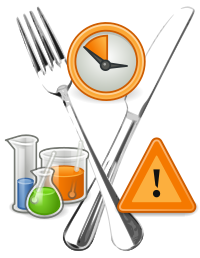
Photo from wikipedia
Abstract Most of the horticultural products are highly perishable and reducing their postharvest losses is extremely important. There is a worldwide trend to explore new alternatives to increase shelf life… Click to show full abstract
Abstract Most of the horticultural products are highly perishable and reducing their postharvest losses is extremely important. There is a worldwide trend to explore new alternatives to increase shelf life and postharvest quality of horticultural products. This review discusses the use of gaseous and some other low molecular mass compounds as a feasible way to maintain quality and prolong shelf life of rapidly deteriorating horticultural products during postharvest stage. These compounds including nitric oxide (NO), carbon monoxide (CO), hydrogen sulfide (H2S), hydrogen peroxide (H2O2), hydrogen gas (H2), carbon dioxide (CO2) and chlorine dioxide (ClO2) could delay horticultural products senescence through different mechanisms such as suppressing respiration rate, inhibiting ethylene biosynthesis, delaying browning and regulating activity of antioxidant enzymes. The review also summarizes the interaction between these molecules and ethylene during horticultural products senescence process. Additionally, NO may cross talk with H2O2 or H2S to promote the quality and prolong the postharvest life of perishable fruits and vegetables. Those compounds regulate the expression of genes during senescence, including ethylene biosynthesis related genes, lipoxygenase gene, cysteine protease gene and chlorophyll degradation related genes. Because of the obvious benefits of these compounds to postharvest freshness of fresh-cut flowers, fruits and vegetables, this area has been and will continue to be one of the priorities of horticultural research in the future.
Journal Title: Scientia Horticulturae
Year Published: 2018
Link to full text (if available)
Share on Social Media: Sign Up to like & get
recommendations!